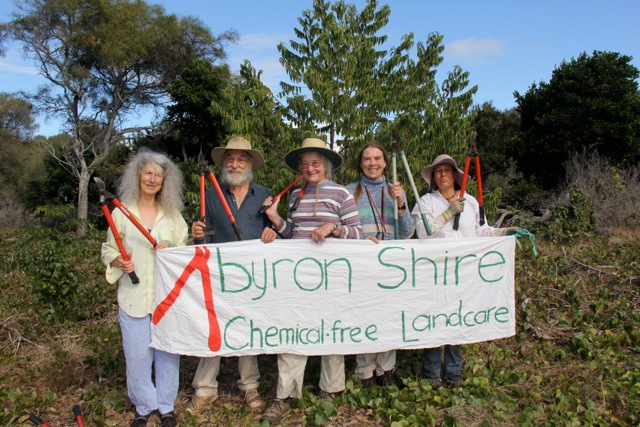The spraying of Tygarah Nature Reserve: Pink Nodding Orchid and Banksia woodland risk
At a meeting on July 13th, Byron Shire Chemical Free Landcare offered an alternative to the aerial spraying of pesticides in Tyagarah Nature Reserve. We proposed to help do the work on the ground using the ecological restoration principles we have developed, a methodology that will protect biodiversity as a whole. Of course we would need funding. National Parks, just in the year 2007/2008, spent a budget of $4 million on aerial spraying some of the NSW coast (>$5000/km). Our method would be far cheaper than that.
I have just spoken with National Parks local area manager, Sue Walker (23rd July) with regard to their intended aerial spraying of Tyagarah Nature Reserve with the pesticide metsulfuron-methyl to ‘control Bitou Bush’. This herbicide goes by trade names such as “Brush-off” and “Brushkiller 600”. Sue Walker said she has not met with the co-managers (Yvonne Stewart, Chief Executive Officer of the Arakwal custodians) to discuss our offer however will do it before the end of the week.
We are seriously concerned about the immediate and the long-term impacts of the aerial spraying operations on Threatened Species like the Pink Nodding Orchid, and the regeneration of Threatened Ecological Communities like Littoral Rainforest. In a letter to The Byron Shire Echo, July 27, 2010, p. 13, ‘Aerial Spraying has its impacts”, Ellen White documented that the 2003 aerial spraying of Dirawong Reserve (and Bundjalung National Park) caused the loss of native species, including the reduction to a single plant of the threatened Nodding Orchid. The death of animal species from the coastal littoral zone was also noted.
Bundjalung National Park was just sprayed again yesterday. Is that what is coming for Tyagarah Nature Reserve – 11 years of aerial spraying? Is that why they are too scared to tell us how many applications they will need to control Bitou Bush in Tyagarah?
The Hon. Richard Jones has also corresponded with National Parks and their Minister requesting answers to a number of serious questions regarding the scientific background (or lack of it) re aerial spraying (please see below). He has yet to hear back. This is important information that we must know before any spraying goes ahead. We don’t want what is happening in Bundjalung National Park to happen in our Shire.
In accordance with requirements under the Pesticides Regulation 1995 and the NPWS Pesticide Use Notification Plan, notice of the intention to aerial spray from the 15th – 26th of July was in The Echo, volume 28#01. On 19th July, Terry Hamill was told by National Parks staff that no aerial spraying would happen that week, but would occur any day during the month of August. The advertisement that we saw in the local newspaper said nothing about August. National Parks said that, legally, there would not be a need to advertise further. Signs have already been changed on the Lighthouse walk to ‘August’. The Pesticide Act is very loose when it comes to protecting the community from pesticide exposure!
We would like to support National Parks. We are caring people with the knowledge of coastal restoration without pesticides; our eyes have been on the floor of the dunes for years. Imagine how amazing would be the journey to restore Tyagarah Nature Reserve without pesticides. Imagine all the beautiful stories that we would tell our children, as we move along the land, learning about the country.
Tyagarah Nature Reserve is surrounded by people and our voices can make a difference – how we want National Parks to manage public land in Byron Shire.
If you care for our coast, please call National Parks
(Byron Coast Area Manager 02-6620 9300),
ask your questions, and tell them your concerns about this operation.
Byron Shire Chemical Free Landcare


 Follow
Follow